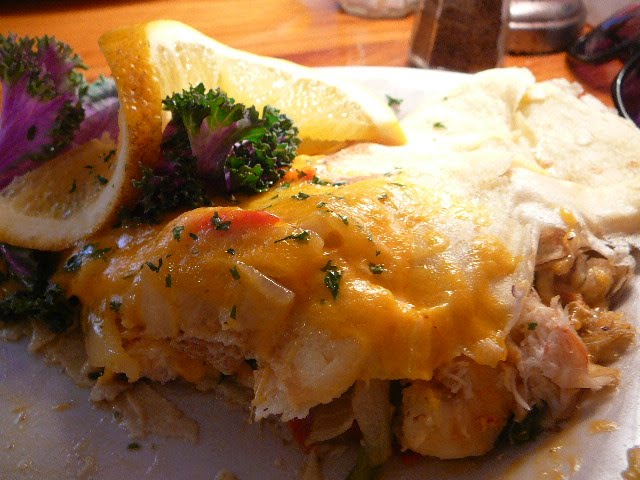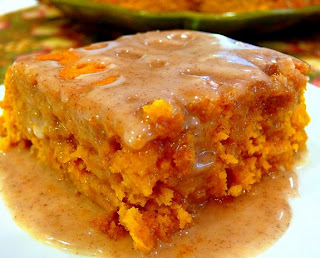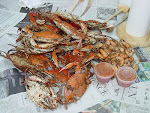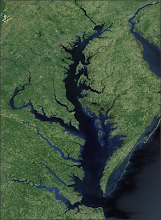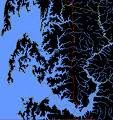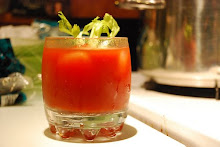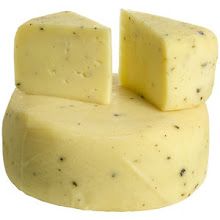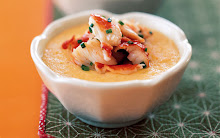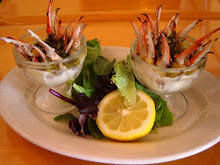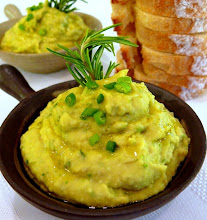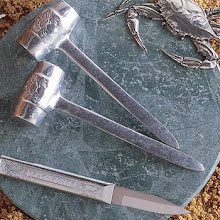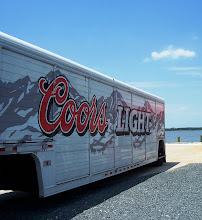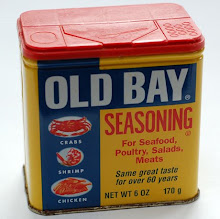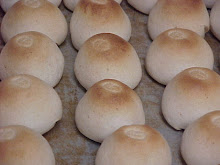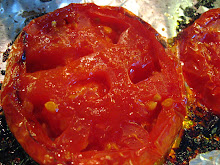


BLUE CRAB
There's nothing more “Chesapeake” than the Bay's signature, the blue crab. Callinectes (“beautiful swimmer”) sapidus (“savory”), a member of the swimming crab family, is an aggressive, bottom-dwelling predator and a "keystone" species in the Bay food web.
There's nothing more “Chesapeake” than the Bay's signature, the blue crab. Callinectes (“beautiful swimmer”) sapidus (“savory”), a member of the swimming crab family, is an aggressive, bottom-dwelling predator and a "keystone" species in the Bay food web.
How To Pick Crabs
Steamed Maryland crabs are definitely not fast food. They are also not for very formal people. After all, you will be eating right off the table with your hands. A Maryland crab feast should be a leisurely afternoon or evening spent with good company. It is practically a seasonal rite for most residents and regular visitors to the Eastern Shore. Of course, you might find you are a bit slow when you start. The first time eating a steamed Maryland crab, you may want the help of a veteran picker. They will probably have a good laugh at your expense while you learn, but by the end of the meal you will be having such a good time it won't matter. And after just a few bites of the sweet treat, you'll be hooked on this Chesapeake delicacy.
Prepare The Table: Steamed crabs are probably best eaten outside at a picnic table because they can be a bit messy. Have a trash can near by. Lay down the following in the order given:
Plastic table cloth to keep juices from dripping through - Brown craft paper or paper grocery bags cut open - Dump a pile of crabs on the table for folks to eat or serve from a large tray or bowl.
Select a Crab: Take a nice heavy crab, just out of the pot and steaming. Remove the claws and set aside for later. You'll need a crab knife (a butter or steak knife will do). A wood crab mallett will be helpful for cracking the claws. Also be sure to have lots of beer and/or soda on hand.
Getting Started: Pull the big pincher claws off the crab and save for later. Pull the hind legs (the back fin) off with a twisting motion. Sometimes some meat will come out with it - bite that off. Yum!
Steamed Maryland crabs are definitely not fast food. They are also not for very formal people. After all, you will be eating right off the table with your hands. A Maryland crab feast should be a leisurely afternoon or evening spent with good company. It is practically a seasonal rite for most residents and regular visitors to the Eastern Shore. Of course, you might find you are a bit slow when you start. The first time eating a steamed Maryland crab, you may want the help of a veteran picker. They will probably have a good laugh at your expense while you learn, but by the end of the meal you will be having such a good time it won't matter. And after just a few bites of the sweet treat, you'll be hooked on this Chesapeake delicacy.
Prepare The Table: Steamed crabs are probably best eaten outside at a picnic table because they can be a bit messy. Have a trash can near by. Lay down the following in the order given:
Plastic table cloth to keep juices from dripping through - Brown craft paper or paper grocery bags cut open - Dump a pile of crabs on the table for folks to eat or serve from a large tray or bowl.
Select a Crab: Take a nice heavy crab, just out of the pot and steaming. Remove the claws and set aside for later. You'll need a crab knife (a butter or steak knife will do). A wood crab mallett will be helpful for cracking the claws. Also be sure to have lots of beer and/or soda on hand.
Getting Started: Pull the big pincher claws off the crab and save for later. Pull the hind legs (the back fin) off with a twisting motion. Sometimes some meat will come out with it - bite that off. Yum!
Pull Off The Other Legs: Some folks will snap open the legs for a small bite of meat - but there isn't much there so you might wait till you get faster at this. Throw away the legs and move on...
Remove The Apron: Turn the crab over so you're looking at the bottom. Insert the tip of your knife into the apron. Pull it up and back. This detaches the top shell.
Remove the Top Shell: Turn the crab over again, right-side up. Now you can take off the top shell and discard it.
Removing the Gills: You'll see the gills and mustard. Using your knife, clean these away.
Eating The Crab Meat: Take the remaining crab in your hands. Snap it in two and all that luscious crab meat will be revealed. You can use your knife to peel the shell away from the meat, or... Using your knife, slice each half in half again lenthwise. Use your knife to pick the meat from the shells.
Eating The Claws: Don't forget the claws you set aside. Use your knife and wooden mallet to crack them open. There are two main sections in the claw - ignore the elbow. Place the sharp edge of your knife in the middle of one section. Tap the dull side of your knife with the mallet until the shell breaks. (This takes practice - not too hard - not too light.) Pull the exposed meat off with your fingers or your teeth.
Clean Up: Roll up your craft paper and all the discarded shells and paper towels and put it in the trash outside. Be sure you don't throw away any knives or mallets etc. Hose down your table cloth and the general area and pick up any shells.
When you're finished - plan your next feast right away.
Remove The Apron: Turn the crab over so you're looking at the bottom. Insert the tip of your knife into the apron. Pull it up and back. This detaches the top shell.
Remove the Top Shell: Turn the crab over again, right-side up. Now you can take off the top shell and discard it.
Removing the Gills: You'll see the gills and mustard. Using your knife, clean these away.
Eating The Crab Meat: Take the remaining crab in your hands. Snap it in two and all that luscious crab meat will be revealed. You can use your knife to peel the shell away from the meat, or... Using your knife, slice each half in half again lenthwise. Use your knife to pick the meat from the shells.
Eating The Claws: Don't forget the claws you set aside. Use your knife and wooden mallet to crack them open. There are two main sections in the claw - ignore the elbow. Place the sharp edge of your knife in the middle of one section. Tap the dull side of your knife with the mallet until the shell breaks. (This takes practice - not too hard - not too light.) Pull the exposed meat off with your fingers or your teeth.
Clean Up: Roll up your craft paper and all the discarded shells and paper towels and put it in the trash outside. Be sure you don't throw away any knives or mallets etc. Hose down your table cloth and the general area and pick up any shells.
When you're finished - plan your next feast right away.






